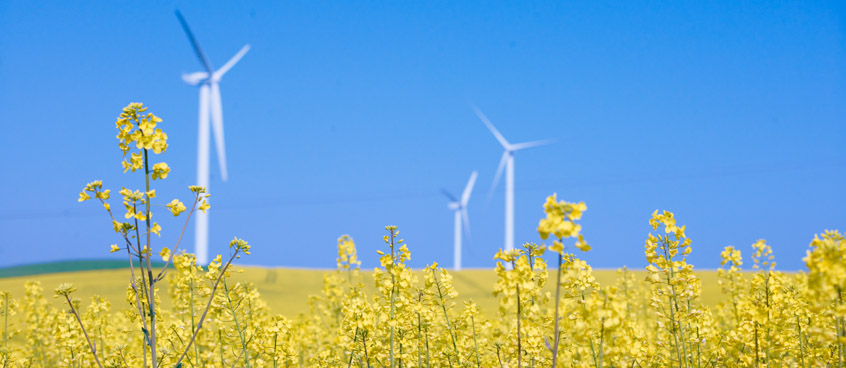
Transforming energy landscapes
Platform Project − PP 6.2
Energy landscapes are thus part of the multifunctional landscapes of the future. To steer this transformation we provide decision support for policy makers, when integrating renewable resource and energy systems in landscapes and explore their synergy potential with carbon dioxide removal options for the transformation towards resilient net zero energy systems.
Under the umbrella of transformations towards sustainability, the energy transition (Energiewende) is a politically driven project in order to achieve ambitious climate targets. Since 80% of the anthropogenic CO2 emissions are released by energy provision, it is a major field where major reductions are required. Renewable resources, however, have a lower energy density and need additional space for generation. New ways for system integration are also required. This is especially true for countries and regions with flat land and limited access to the sea, which strongly depend on photovoltaic and on shore wind electricity generation. For biomass, competing demands for material and energy are expected. Managing bioenergy provision and application optimally can complement the advantages of other renewables, but therefore it is necessary to consider the limited resource base and to include all the needs for net-zero energy systems.
The localisation and also the interplay of renewable resources and energy units in the landscape can be designed with different preferences, which are still under development and debate. In addition, carbon dioxide removal (also called negative emission technologies, NET) is seen as a potential element for net zero supply systems, at least in prominent climate models (IPCC 2018). In conclusion, landscapes are also faced with the additional expectation to integrate those systems, which are often only described in international studies and lack of adaptation to specific regional situations.
Energy landscapes are thus part of the multifunctional landscapes of the future. So far, they are not very well considered in strategic energy planning: energy system analysis and design typically includes a huge variation of technical options for renewable energies, carbon dioxide removal, as well as spatial information on the energy infrastructure. They do not, however, include information about bio-physical conditions or dedicated environmental risks, neither about humans living in a certain landscapes nor about their ideas on a desirable energy landscape. And this is even more challenging if we consider that society is affected by the transformation in many ways and also continuously re-designing the transformation.
Our research vision starts exactly here:We aim to provide decision support for policy makers at different levels, when integrating renewable resource and energy systems (RRES) in landscapes and explore their synergy potential with carbon dioxide removal options (NET) for the transformation towards resilient net zero energy systems.
Main objectives of the project
Against this background the main objectives of the project are
- Mapping of pathways towards resilient net-zero energy supply
- Exploring the potential of RRES and NETs for meeting net zero targets
- Investigating spatial requirements of RRES and as NETs and related land use conflicts
- Monitoring of spatial distribution and deployment of technologies, tracing of political discourses & assessment of their societal and institutional feasibility at the international, national and regional level
- Analysing and proposing policies and instruments for enabling governance under a net-zero energy policy
Contributors
Ayeh, Diana; Beck, Silke; Bezama, Alberto; Borchers, Malgorzata; Esmaeilialiabadi, Danial; Förster, Johannes; Gawel, Erik; Groß, Matthias; Jordan, Matthias; Köck, Wolfgang; Korte, Klaas; Lehmann, Paul; Lehneis, Reinhold; Manske, David; Markus, Till; Mittelstädt, Nora; Musonda, Frazer; Otto, Danny; Rheinschmitt, Christoph; Schaller, Romina Luz; Söding, Max Julian; Thrän, Daniela; Zeug, Walther
Subprojects
Subproject 1: Integrating Renewable Energies and Resources in Energy Landscapes
Subproject 2: Exploring Negative Emission Technologies in Transforming Energy Landscapes
